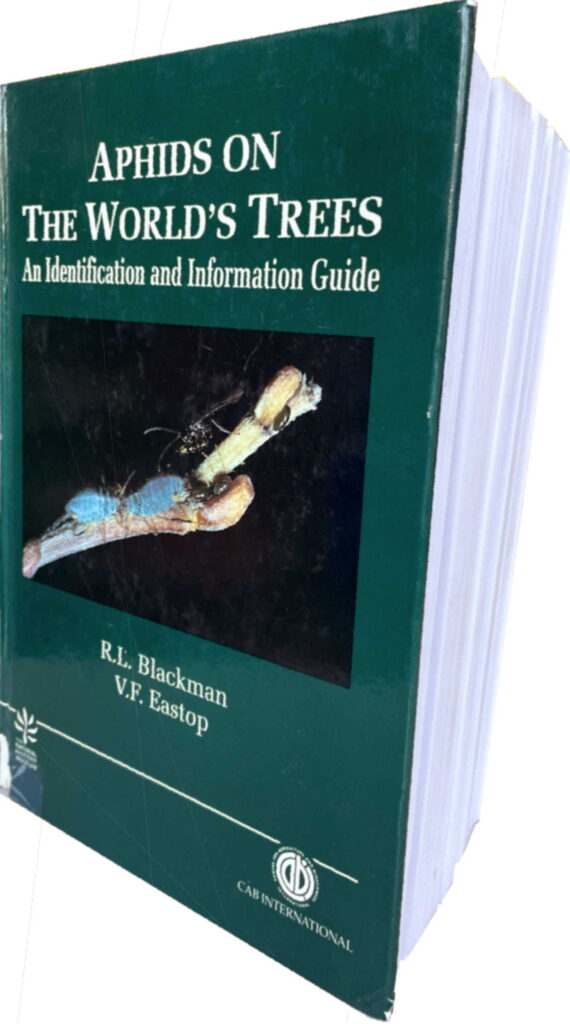Blackman RL, Eastop VF (1994) Aphids on the World’s Trees. Cab International, Wallingford, England, 986 pp.

PREFACE
One of the first responses that we had to the book Aphids on the World’s Crops, soon after its publication in 1984, was from a colleague in forest entomology, who pointed out that, despite the title of the work, we had neglected even to mention a crop that he regarded as rather important, namely timber. Almost ten years later, we hope that we have now gone some way towards rectifying that omission.
When we compiled Aphids on the World’s Crops (1984) we had good reason to turn a blind eye to the aphids on timber trees, as we knew that keys to identify tree-dwelling aphids would be a very different task, much more complicated than the rather simple keys that we put together ten years ago to identify the aphids most commonly found on agricultural and horticultural crops. When we actually got down to the job, we found it necessary to adopt a far more comprehensive approach than in the earlier work, as we could think of no justifiable reason for including some aphid species and omitting others. There was also no way of providing keys to identify aphids that had not been slide-mounted, as many of the key couplets involve relatively minor differences between closely related species, requiring microscopic examination. We think, nevertheless, that non-specialist entomologists will be able to use this book to identify tree-dwelling aphids at least to genus, and it may then be possible to confirm the identity of a species by taking into account the biological information provided in Section III.
Another small problem was to decide what is, and what is not, a tree. We claim no expertise in this matter, and have relied on standard botanical reference works, especially Bailey (1949), Uphof (1968), Willis (1973), Boutelje (1980) and Mabberley (1987). If a genus contains plant species classified as trees by any or all of these authorities then we have included it. If, as is often the case, the same genus includes species of shrubby habit, then we have also generally included such shrubs in the host lists because, in choosing a host plant, aphids have a lot of regard for its genus but very little regard for its growth habit.
We are grateful to several colleagues who have given permission for the results of their (as yet) unpublished work to be included; namely B. Agarwala, S. Akimoto, S. Aoki, S. Barbagallo, P.A. Brown, C.I. Carter, S. Chakrabarti, R. Danielsson, J. Holman, N. Moran, J.H. Martin, D. Noordam, W. Quednau, G. Remaudière, J.T. Sorensen, D. Stern, M.B. Stoetzel and D.J. Voegtlin.